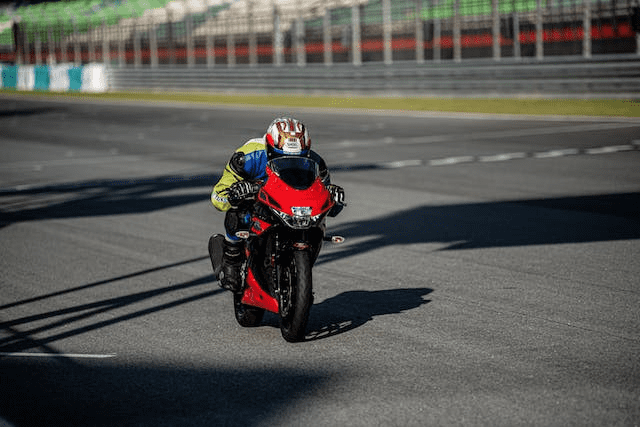The history of Suzuki* motorcycles will be briefly covered in this blog post. Though it started off as a textile factory, now Suzuki* is a multinational conglomerate that manufactures not only textiles but also automobiles, motorbikes, outboard motors, and even all-terrain vehicles (ATVs.) Hamamatsu, Japan is home to the Suzuki Loom Works*, which was first created by Michio Suzuki in the year 1909.
In 1920, the Suzuki Loom Manufacturing Company* started making cotton-weaving machinery, then moved on to producing silk-weaving machinery. Success quickly followed, and within a few years the business had skyrocketed.
Due to a production halt in the years immediately after World War II, the company’s finances deteriorated, forcing an intensification in its operations.
The Suzuki* company of Japan started tinkering with bicycle-mounted motors in 1947, filling a need for inexpensive individual mobility in a nation with seriously damaged infrastructure.

The 36cc Power Free was introduced by Suzuki Loom Manufacturing* in 1952. Extremely successful was the two-stroke, air-cooled motorbike with a simple motor drive arrangement.
The larger-capacity Diamond Free was released the following year. After winning its category in the Mount Fuji Hill Climb, the demand for the new model surged, and the company started producing 6,000 bicycles each month.
The firm changed its name to Suzuki Motor Company* in 1954.
After introducing a line of true motorcycles rather than bicycles with motors in 1954, the company adopted the moniker Colleda*, which means “This is it!”
The first iteration of the CO was equipped with a 125cc four-stroke engine and a steel frame. The Suzuki* “S” mark was already well-known by the time the Colleda* Twin was given an electric starter at the end of the decade, and by that point, the company had already begun to establish itself as an expert in two-stroke engines.
From 1962 through 1967, Suzuki* dominated the 50cc motorcycle category in the World Championships.
A Los Angeles-based subsidiary was set up in 1963 as part of Suzuki’s* expansion into international markets.

In its debut year of 1965, the X6 Hustler*—or the T20 Super Six* in Europe—was heralded as the fastest 250cc motorbike in the world. Among its many innovative features were a tubular steel chassis and a six-speed drivetrain.
The T500, the largest-capacity two-stroke motorbike with a top speed of 112 mph (180 km/h,) was produced three years later and became even more popular globally.
Suzuki* turned its focus to international markets in the 1970s and built its first production facility outside of Japan in Thailand.
Not only that, but Suzuki* also swept the World Championships for motocross in three different classes at that time: the 250cc Road category, the 125cc class, and the 500cc class.

The British rider Barry Sheene won the 500cc World Championship in both 1976 and 1977, solidifying his place as one of the most successful 500cc racers in history.
Suzuki* introduced its first four-stroke, four-cylinder GS* series motorcycles in the 1970s. These bikes came in a variety of sizes, with the largest having a 1,000 cc displacement.
Suzuki* released the RE-5* rotary-engined motorcycle in the 1970s after years of development and testing, but it was a commercial and financial disaster.

Suzuki* had a lot of success in Grand Prix races in the ’80s and ’90s, including two 500cc World Championships.
Among the new vehicles released were several bikes, category-leading motocross motorcycles, and the ground-breaking GSX* Series, which contained the world’s greatest 1,100cc Katana* built for overseas markets.
In addition, the firm entered into agreements with China, initially for the selling of motorcycles and then for the creation of production facilities in the nation.
This was more indication of Suzuki’s* success in expanding its operations around the globe. A quarter of a billion motorbikes were sent overseas before 1995.

When it was first introduced in 1999, the Suzuki* Hayabusa* 1300 was a sleek and aerodynamic sports motorbike that was designed for riders who wanted to test the limits of what was possible.
At the time, it held the title of being the world’s fastest road bike thanks to its peak speed of little more than 186 mph (300 km/h.)
As the new millennium began, Suzuki* grew in prominence thanks to partnerships with GM* and Japanese motorcycle industry competitor Kawasaki*.
Throughout the whole decade of the 2000s, unique breakthroughs established new benchmarks in a large variety of market areas. The Suzuki* GSX-R1000* from 2001 was a racing motorbike that dominated the globe. It had superb handling, a lightweight body, and outstanding fuel-injected power, all in one convenient package.
In contrast, the revolutionary transmission system of the Burgman* 650, which included two manual and two automatic modes, together with its enormous 650cc engine, revolutionized the motorcycle business.

Suzuki* continues to work hard to improve its reputation as a rapidly growing company throughout the world. This illustrious brand is well known for its forward-thinking attitude, and it is now at the forefront of innovation in the motorcycle industry. This tendency has been helped along by the introduction of a variety of futuristic prototypes as well as an interest in making investments in alternative technologies.
We really hope that learning about the history of Suzuki* motorcycles was interesting to you. Additional details on Suzuki* and other motorcycle manufacturers will be included in subsequent posts.
If you are a die-hard Suzuki* rider with the same forward-thinking attitude about technology, you might want to use a high-performance synthetic motor oil made for motorcycles. This will protect against piston wear and bearing wear. By using such a lubricant, considerable reductions in heat and friction will be achieved. If you want to get solid clutch engagement and smooth shifting on your Suzuki* motorcycle, you should consider utilizing synthetics.
*All trademarked names and images are the property of their respective owners and may be registered marks in some countries. No affiliation or endorsement claim, express or implied, is made by their use.
